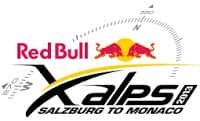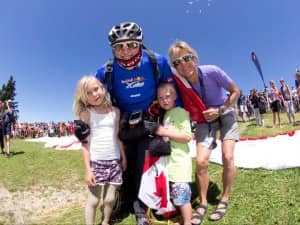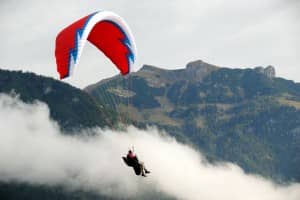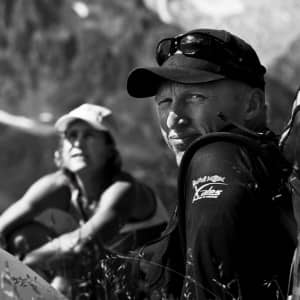I had the pleasure to be in Salzburg at Hangar 7 for the 2013 www.RedBullxAlps.com official route release.
Wow, 1031 km as the crow flies and going across a lot of very high alpine terrain. No doubt that this year will be for sure a big challenge and I am sure a very interesting race.
Start: Salzburg
1. Gaisberg 1,287m
2. Dachstein 2,995m
3. Wildkogel, 2,224m
4. Zugspitze / Garmisch-Partenkirchen 2,962m
5. Ortler / Sulden 1,906m
6. Interlaken 568m
7. Matterhorn 4,478m
8. Mont Blanc 4,810m
9. Saint Hilaire 995m
10. Peille 600m
Finish: Monaco
Thanks again to Hannes and Flo to put on this amazing day.
Here is a video from Mik about of Hangar 7 and the DC6 flight.
Red Bull Douglas DC-6B flight from Mik Broschart on Vimeo.
 This question is very often asked to us, and my answer, in short, is “we have not learnt how to do it right yet and therefore we have to do it again!”.
This question is very often asked to us, and my answer, in short, is “we have not learnt how to do it right yet and therefore we have to do it again!”.
Well, that is one answer, but not quite true. We also say it is the adventure and experience, which is one of the reasons, but there is more behind it than just the adventure and experience.
If we look back at how our lives were before the xAlps and how it is now, it shows that the xAlps have had an impact on our lives way more than we ever expected the race would when we first started.
Firstly, we have learned about the Alps and know more about the geography and history of these mountains than prior to the race, and we have learned a lot about our bodies and minds, and know ourselves way better than ever before. But the most rewarding result I got out of the xAlps it is to see and realize how lucky I am to be with my supporter, best friend, and the mother of my kids. The xAlps are a serious “relationship checker” and it will bring out and show how well your team leadership skills are (on both ends), how your self discipline is, how you respect and trust each other and how important it is to accept things for what they are and accept people too, for who they are. This is all something we kind of know, but these fundamentals can get forgotten very fast when you are in a 2 week long race , extremely exhausted and when things are not always going the way you want it to go.
Penny and I learned how lucky we are to be able to have so much fun with the race and everything that comes along with it. Even though we, and everyone else racing the xAlps, have a lot of stress factors against us, such as the race itself, the time to prepare, work itself, the financial burden of the race, lost income, the training, sacrificing time with the family and the interference of our regular family life.
 Now how can we still do this and still be fun?
Now how can we still do this and still be fun?
It all comes all down to the very basic fundamentals of life, such as trust, respect, the right attitude and self discipline. Once all this is in place, one needs to deal with his ego and has to simply learn to accept other people and situations as they are and make the best out of any situation.
Obeying these fundamentals helps make what one would consider the impossible, possible, and makes a race like the xAlps fun.
Everything I feel and have written about, does not just have to apply to the xAlps, it will work for everyones personal life, relationship or family, for any sport, in the workplace, work career and leadership.
What we really enjoy and what has impacted our lives, through our participation in the xAlps, is that we really enjoy sharing and influencing others with our stories and experiences.
We have done, and continue to do, a lot of “motivational/educational” presentations and leadership training in schools, to Rotary clubs and Corporations (mostly oil companies), for entertainment and also to educate them how much fun and mileage you can achieve with the right attitude.
Do not just sit and wait … take it to the Max
There is some very interesting news about reserve chutes. www.Skyman.aero created new
milestone for super-light reserve chute with a very slow sink rate. See more details at http://www.skyman.co/ultra-cross-100-is-making-waves/
for others to see what they are missing!!
Seasons Greetings and a happy and healthy 2013.
We just got back from Mexico in time for the Christmas festivities. One of them is flying at Panorama as Santa.
What a great day flying as Santa and skiing with the kids. Live is good and we are looking forward to a great 2013.
all the best, lots of health and all you wish for 2013
Max, Penny and the kids
Panorama is welcoming paragliding pilots for the 2012/2013 season.
Paraglider day tickets (flyable days) will be again available for $20.
We do have a couple minor changes.
In short:
- there is now a NO-FLY zone in the 1 Mile Quad chair lift area.
- every pilot (even if you flew here before) needs to go through an orientation and needs to signed the 2012/2013 Panorama waiver.
- stay at least 150 feet away from the lift lines.
More details about flying at Panorama is at https://flyingmax.com/area/panorama/
Penny and I are right now in Mexico and will be back Dec 20th and plan to do some “Santa” flying on the 24th. Let us know if anyone is planing to come out for the Xmas days.
Season Greetings
Max, Penny and the kids
Penny and I are very proud to represent Canada and feel honored to be accepted in the race with this amazing select group of Athletes/Pilots (click here to see the list of athletes)
We are participating now for the 4th time and plan to use all our gained experience to make it to Monaco.
We will keep updating this blog in how we are preparing ourselves.
Stay tuned.
Max & Penny
Steve Nash and myself were holding a xAlps workshop for “Nova Junior Pilots” to give them some insights of the xAlps.
First we planned to head to Chamonix to “hike & fly” from Mont Blanc south towards Monaco, but due the strong winds in this area we stayed in the eastern part of the alps.
The first day was a travel day ending with a one hour flight from the “Hirtzer” (near Meran). The day before it snowed down to 1800 meters and therefore we had to plan to stay lower for the next couple of days.
The 2nd day we “hiked & flew” from the Jaufenpass to Bruneck. This started with a 2 hour hike up to the Jaufenpass where we were able to fly to Sterzing. The interesting part was that we needed to
find a launch site to take off into the west (due the west wind) and then fly to the east. This is typical in the xAlps and puts a different perspective of finding the right launch site then you normally do.
Following the flight, we walked for 6 km along the river and then hiked up to another pass followed with a long glide into the Valles valley. For a XC pilot, the day ends after you landed, but not in the xAlps, so we started to walk for an hour into the night to give them this experience as well.
Overall, it was a great example to display sections of a typical xAlps day, such as hiking to a launch and fly into the lee to get where you need to go, walking in the valley, crossing another pass and keep walking in the dark after a flight.
The next day we headed to the Dolomite’s and wanted to take advantage of the good weather. We started with a hike up to the Belvedere followed with a flight to Canazei and then another hike up to Col Rodella followed with a extended glide into the valley.
For the last day Steve and I set a task to the “Junior Pilots” and we only followed them. The task was from Feltre (south Italy) to our team meeting landing site at Lago (near Belluno). The team choose a save route, starting with a 5 hour hike and then a save glide to the goal. It feels good when you plan a hike & fly route and make it to goal. And even better when a lot of your Nova Team Members are landing with you at the same landing.
The annual Nova Team meet was a huge success with over 50 people coming from all over the world. We had a great time to socialize, party and get the latest news of what Nova is working on.
Thanks again to Robert starting this idea and for Nova to make it all happen and last but not least to the three Junior Nova Team members Moritz, Rico and Robert to make this
such a fun week.
 Originally the SIV was scheduled to be at the Gardasee in Italy but due the bad weather in the southern Alps, Nova was able to move the workshop to the Achensee (just north of the Alps). First it did not look very good as the Foehn (Chinook) was building up and we had some gusty and windy conditions in the morning. It still turned out we could do up to 4 flights on Saturday and 3 flights on Sunday, which was very surprising. Walter Holzmuller was running the workshop and did a great job as all the discussions and maneuvers were practice related.The interesting statistics about SIV (Simulated
Originally the SIV was scheduled to be at the Gardasee in Italy but due the bad weather in the southern Alps, Nova was able to move the workshop to the Achensee (just north of the Alps). First it did not look very good as the Foehn (Chinook) was building up and we had some gusty and windy conditions in the morning. It still turned out we could do up to 4 flights on Saturday and 3 flights on Sunday, which was very surprising. Walter Holzmuller was running the workshop and did a great job as all the discussions and maneuvers were practice related.The interesting statistics about SIV (Simulated
Incidence in flight/Vol) was that tr there is a huge percentage of experienced cross-country pilots (flying at least 10-25 years) have never done a SIV course. It seams like that the biggest percentage of SIV participants are flying for 3-5 year. The most what I got out of the workshop was the different types of methods to get down to the ground fast. Here are the different methods: 1] The most common one is “Big Ears”. This gets you down with up to 12 m/sec (only with 3 liners, not 2 liners). Keep in mind, going down faster does not mean gaining more ground speed/airspeed, if anything, you are flying slower. A lot of pilots use this method thinking they fly faster to fly away from something, which is not true. “Big Ears” work very well, but can not be used as an overall maneuver to get down. Sometimes it is better to fly away as fast as possible from big lift and then spiral down instead of staying in big lift with “Big Ears”. 2] “B-line stall” which is not recommend anymore as it can lead to a “kravatte” and maybe gives you about 12 m/sec sink. Check your manufactures manual, some advice not to fly “B-line stalls” at all. 3] A “deep Spiral” can achieve more then 20 m/sec, but it creates a lot of g-forces and can lead to black outs and can be rough to do in turbulent air.
4] The most interesting maneuver was the 60% asymmetric collapsed spiral dive. With this spiral dive you have less g-forces and a stable decent of more then 25 m/sec in turbulent conditions. I was very surprised to experience how stable and save this spiral is. My big worry was to get into trouble with lines getting caught in the canopy during this maneuver or when stopping it. But based on the experiences the SIV schools had, there are no incidents like that at all. The most important result of this workshop was learning about the asymmetric collapsed spiral dive and to be able to practice it over water. Thanks again to Walter Holzmuller, Mik Brochard, Toni Bender and Nova to put this on for us.
After the Octoberfest I drove back to Sillian as I was guiding one more week in the Dolomite’s for Bluesky.at. We were a group of 12 pilots including Lucille from Edmonton and the weather was awesome. The first day we flew at Monte Piano (next to the 3 Zinnen) and the rest of the week we flew at Col Rodella and Belvedere. On 2 days most people logged flights with over 2 hour.
Every morning some of the participants joined for a “hike & fly” before breakfast to enjoy the morning air. The last morning was very spectacular as we could watch and fly over the cold air (fog) flushing over the Corvara pass down to Arabba.
Now I am on my way to Achensee for the Nova SIV.







